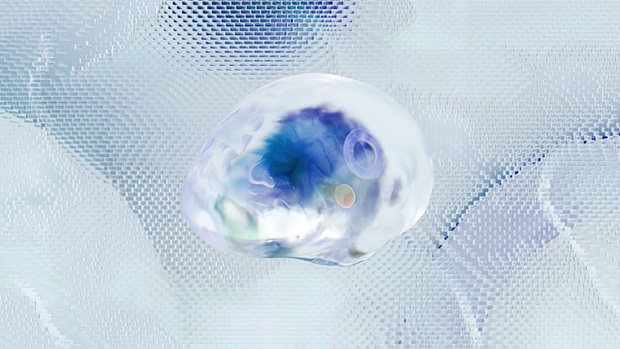How Neuroscience Principles Are Shaping Online Campaigns
The rush of excitement when you see a pop-up sale on your favorite shopping site or the irresistible urge to click on a catchy headline—these aren’t just random reactions. They’re deeply rooted in our brains. Ever found yourself pondering, “I wish I had someone else to do my assignment on why certain online ads resonate so deeply?” Well, the answer lies at the intersection of web marketing and neuroscience.
Marketers are leveraging neuroscience principles to craft campaigns that resonate with the audience at a primal level. So, let’s explore how neuro-web marketing works to understand the brain’s role in the success of online campaigns.

Source: https://unsplash.com/photos/9Y4ronQmPjk
The Science Behind Clicks
Yes, intentional clicks on ads aren’t just random events. There are some foundational neuroscience concepts behind it. Here’s a snapshot:
- Dopamine Release. Dopamine is often termed the “feel-good” neurotransmitter. Effective campaigns create stimuli that lead to the release of dopamine. As a result, users feel pleasure and associate it with the brand.
- Mirror Neurons. These neurons make one mirror someone else’s behavior. When viewers see someone enjoy a product in an ad, their mirror neurons activate, making them want the same experience.
Colors and Their Impact
Colors are not mere decorative elements; they have profound impacts on our perceptions and decisions. From the calm blue of Facebook to the fiery red of Netflix, color choices in campaigns are well-thought-out:
- Blue represents trust and reliability.
- Red evokes emotions of excitement and passion.
- Green indicates growth, health, and tranquility.
- Yellow reflects happiness, optimism, and attention-catching.
By understanding how the brain processes these color meanings, marketers can elicit desired responses.
The Power of Emotional Storytelling
Humans are hardwired for stories. Our ancestors passed down knowledge through tales, and our brains are conditioned to perceive narratives as more engaging and relatable. Modern campaigns harness this:
- Relatability. Ads featuring familiar scenarios or characters make viewers feel seen and understood.
- Catharsis. Stories with emotional climaxes lead to emotional releases, cementing the ad in viewers’ memories.
- Moral Alignments. Brands conveying values or stances resonate more with audiences who share those beliefs.
Remember the last time you thought, “I need someone to do my assignment for me while I watch this moving ad again”? That’s emotional storytelling at work.

Source: https://unsplash.com/photos/Z2bJeJQRbW0
Repetition and Memory Encoding
While endlessly repetitive ads can be annoying, there’s a science behind the repetition. It hinges on the concept of “neural encoding.” Repetitive exposure to a stimulus strengthens the neural pathways associated with it, enhancing memory retention.
Here are the benefits of repetition in campaigns:
- Brand Recognition. The more users see a brand, the more familiar it becomes.
- Positive Affiliation. If the repeated stimulus is positive, the brain starts associating the brand with positivity.
- Reinforcing the Message. Each exposure helps drill the brand’s message deeper.
The Art of Persuasion Through Scarcity
Humans are biologically programmed to value scarce resources, a throwback to our hunter-gatherer days. Today’s marketers capitalize on this:
- Limited-time offers create urgency.
- Exclusive member deals make users feel special.
- “Only a few items left” prompts quicker purchase decisions.
Social Proof and Its Neural Roots
Ever wondered why testimonials and star ratings sway our choices? This is due to the brain’s inherent need for social validation. When uncertain, our brains rely on others’ experiences to gauge safety and worthiness. Hence, adding user reviews, celebrity endorsements, and influencer recommendations boosts campaign credibility.
Sounds, Music, and Brain Waves
Soundscapes in online campaigns aren’t just fillers. They evoke emotions, set the ad’s mood, and even influence purchase decisions. An upbeat tune can make users jovial, while a melancholic melody can evoke nostalgia. Choosing the right sound can make all the difference in user engagement.
In the hustle of student life, haven’t we all sometimes wished for someone to do my assignment for me while we hum along to an ad’s catchy jingle? It’s no accident; it’s neuroscience at play.

Source: https://unsplash.com/photos/mRMQwK513hY
Examples of Successful Online Campaigns Harnessing Neuroscience Principles
In the evolving landscape of online marketing, numerous brands have integrated neuroscience principles into their campaigns to make them memorable, effective, and persuasive. Let’s delve into a few standout examples:
Apple’s “Shot on iPhone” Campaign
The campaign is a brilliant example of emotional storytelling. By showcasing real photographs iPhone users take worldwide, Apple taps into the principle of relatability.
The campaign offers viewers diverse glimpses of everyday moments, vast landscapes, and intimate portraits. All of it elicits emotions that range from wonder to nostalgia. Not only does the campaign emphasize the iPhone’s camera capabilities, but it also strengthens Apple’s image as a brand. When users see images similar to their life experiences, they subconsciously resonate with the product.
Spotify’s End-of-Year Playlists
Spotify’s annual “Wrapped” feature provides users with an overview of their listening habits over the past year. By crafting personalized playlists, Spotify taps into the dopamine release associated with familiar tunes and cherished memories. The custom graphics, showing stats and facts about users’ music choices, make users feel seen and understood.
This personalized attention fortifies Spotify’s position as a user-centric music platform.
Coca-Cola’s “Share a Coke” Campaign
The “Share a Coke” campaign, where Coca-Cola bottles featured common first names, harnessed the neuroscience principle of the self-reference effect.
By placing names on bottles, Coca-Cola made the experience of grabbing a drink more personal and memorable. The urge to find a bottle with one’s name—or to gift one with a friend’s name—intensified the personal connection users felt with the brand.
Airbnb’s “Live There” Campaign
Airbnb’s “Live There” campaign prompted people to experience something more than just traveling. Instead of merely staying in a city, Airbnb encouraged travelers to “live” there, even if just for a night.
This campaign tapped into the mirror neuron system. By showing real hosts and travelers sharing experiences, future travelers could envision and desire the same connections. It also offered an alternative to impersonal hotels, emphasizing Airbnb’s unique selling proposition.
Dove’s “Real Beauty” Campaign
Dove’s “Real Beauty” campaign showcased women of all shapes, sizes, and ethnicities to break beauty stereotypes.
By focusing on genuine, relatable narratives, Dove activated viewers’ mirror neurons, making them resonate with the portrayed women. This campaign strengthened Dove’s image as a brand that champions real beauty over superficial standards.
Summing Up
Neuroscience is driving online marketing. By following its principles, marketers craft campaigns that resonate, evoke emotions, and drive actions. As budding marketers or simply curious students, understanding these principles provides an edge in the competitive digital field.
So, the next time an online ad gives you a pause, think beyond the visuals and words. Appreciate the fine art of neuro-web marketing.
Copyright © . All Rights Reserved